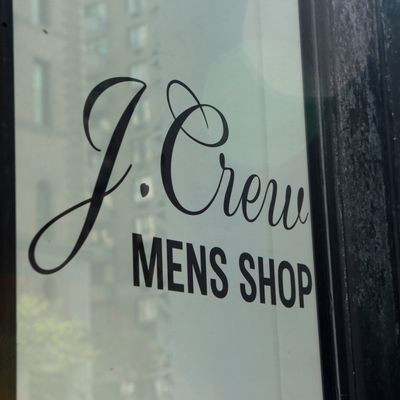
Roughly 2.1 million Americans lost their jobs last week, according to Labor Department data. In this economy, that qualifies as good news.
Yes, 2.1 million initial unemployment claims is an awful lot of initial unemployment claims. But it is also a smaller number of claims than were filed the previous week. In fact, the number of Americans applying for first-time jobless benefits has now declined for eight straight weeks. More significantly, the number of Americans who just joined the unemployment roles is smaller than the number who just left them: Even with 2.1 million additions, the ranks of the jobless still (ostensibly) declined by 3.8 million in recent days. Further, since America’s unemployment insurance offices are woefully underfunded, large backlogs of unprocessed unemployment insurance applications have amassed in many states. For this reason, it’s plausible that a significant portion of the 2.1 million “new” jobless claims reflect weeks-old layoffs.
All of which is to say, there is now some evidence that state-level reopenings are reviving jobs faster than the broader economic slowdown is eliminating them. Were this trend to continue, then the worst of the coronavirus recession would be behind us, months of steady job growth would lie ahead, and the stock market might not be as insanely overvalued as many (including myself) have been inclined to believe.
But there are reasons to view that scenario with skepticism. Many fragile businesses may rehire furloughed workers for their initial reopenings — only to find, a few weeks later, that the mere lifting of shutdown orders isn’t sufficient to restore their profit margins. Consumer demand remains depressed in many foreign nations that have already reopened their economies, after suffering outbreaks far less devastating than America’s. If restaurants and hair salons reopen but fail to generate enough revenue to cover their liabilities, steady job growth may be difficult to sustain (especially if Congress fails to extend and expand the Paycheck Protection Program).
Meanwhile, a good many firms that have managed to avoid or limit layoffs up to this point may soon be forced to rain pink slips like confetti.
This month, 27 major companies (defined as firms with at least $50 million in liabilities) filed for bankruptcy, the highest monthly total since May 2009. For 2020 as a whole, the total number of major bankruptcies is now 98, which is the most the United States has seen to start any year since the Great Recession. According to Bloomberg, almost no analysts believe that bankruptcies have “by any means hit a peak.” Rather, consensus holds that they are set to continue accumulating at the present rate — if not a higher one — for a long time to come.
Recent revisions to corporate credit ratings add credence to this assessment. The S&P has now released “downgrade warnings” on 1,287 of its rated debt issuers — which is to say, it has warned investors that such firms face a high risk of having their bonds downgraded due to their increasingly negative business prospects. That figure does not include the nearly 700 downgrades that the agency has already enacted since the COVID-19 crisis commenced. And yet, the 1,287 downgrade warnings still top the 1,028 the ratings agency issued in 2009. Automakers, transportation firms, leisure companies, and (gulp) media properties claimed a disproportionate share of at-risk ratings.
In our extraordinary circumstances, though, the best metrics for our economy’s near-term prospects are public-health data. If reopenings trigger a new wave of coronavirus infections, no amount of pent-up consumer demand for dining out will save the restaurant industry. And nothing will do more to determine the progression of the S&P’s credit ratings than the progression of the pandemic. As I’ve written, recent news about COVID-19 has been mixed. But the downside risks are non-negligible. In at least 13 states — including populous ones like Florida and California — daily new coronavirus cases have been rising. No major city in America is anywhere near achieving herd immunity. And a vaccine likely remains more than a year away. There is some cause for optimism in the war on COVID-19. Masks appear very effective at containing spread, and the virus seems to be reliant on super-spreaders to perpetuate itself.
But so long as the federal response to the pandemic remains haphazard — and Congress’s fiscal response to the recession inequitable and inadequate — there will be a significant risk of the economy getting worse before it gets better.






























